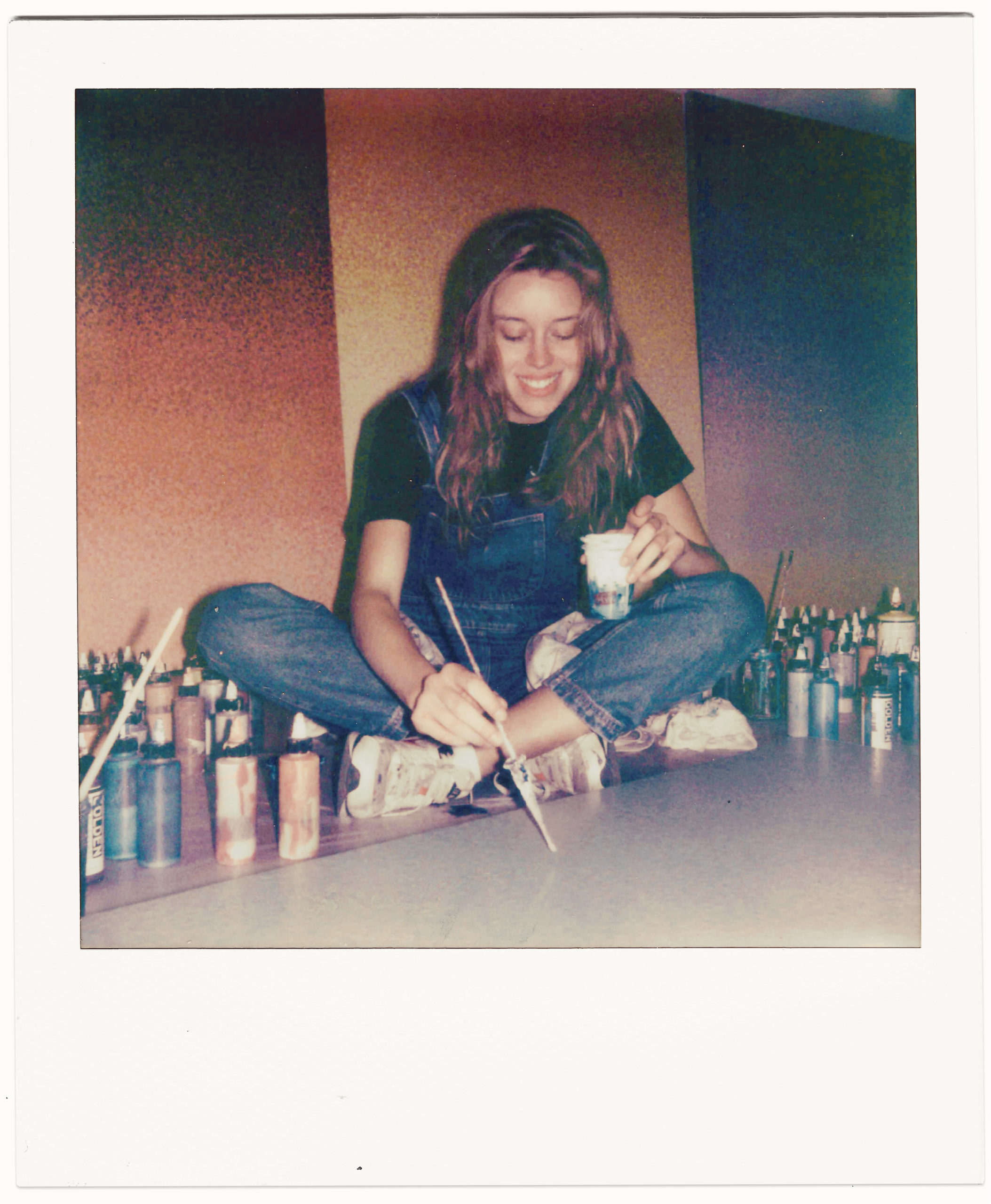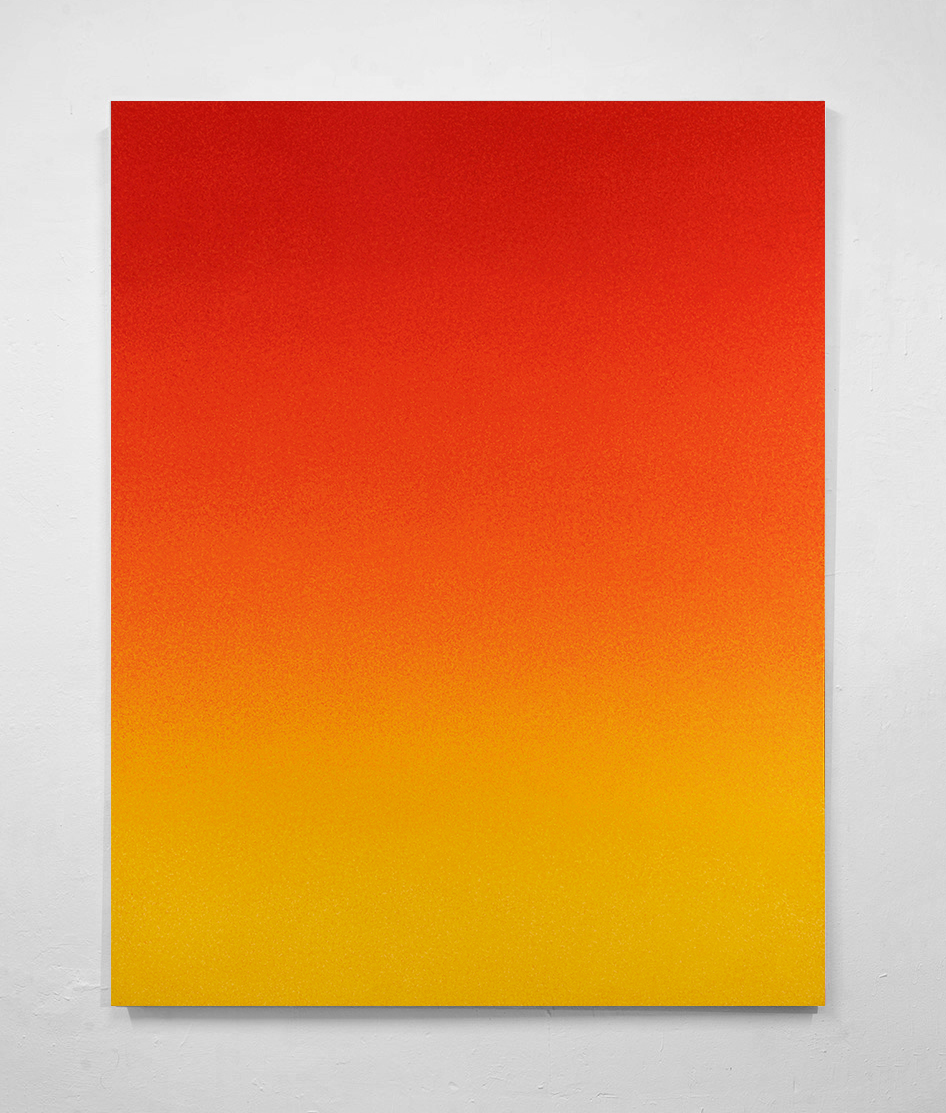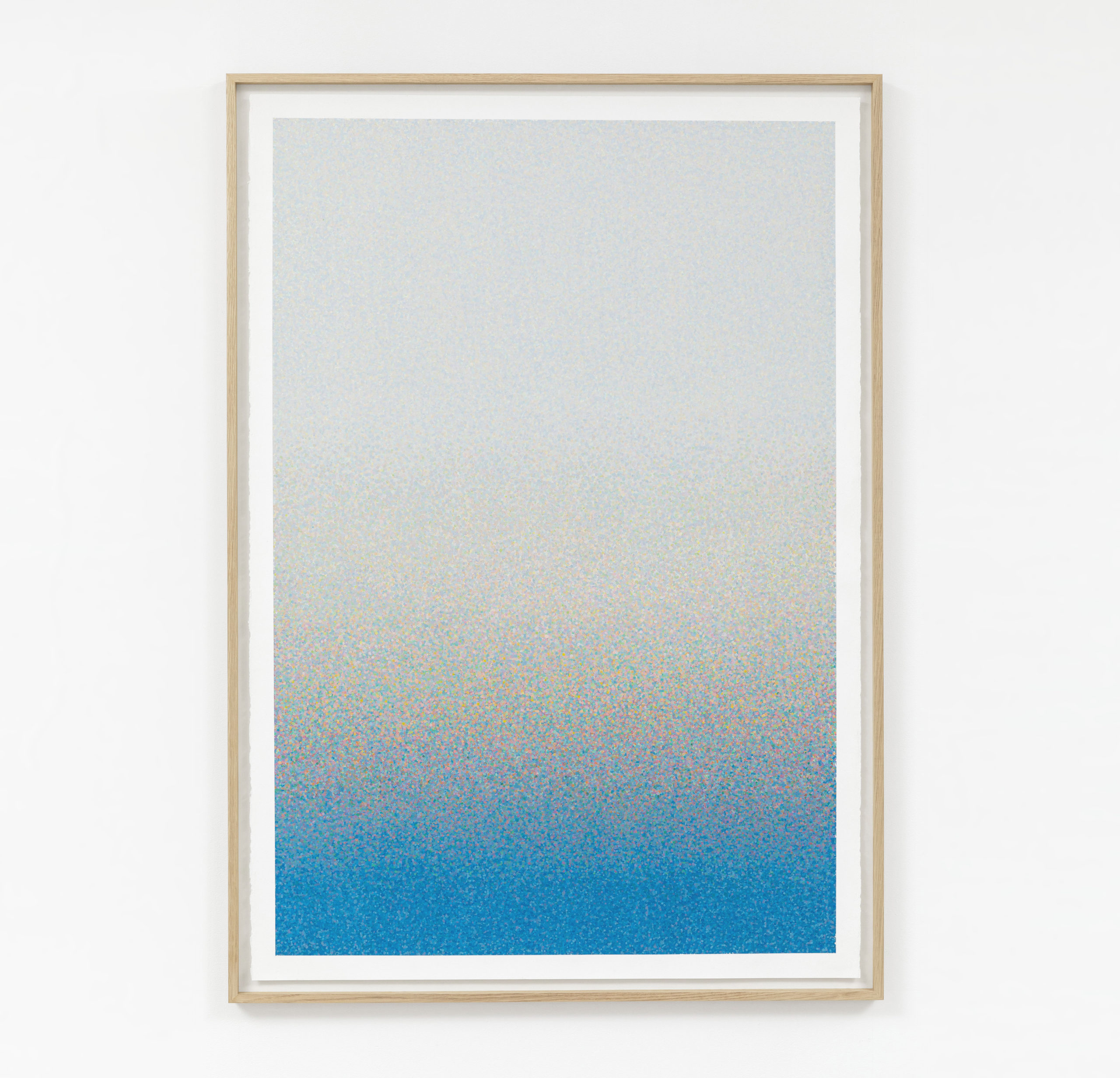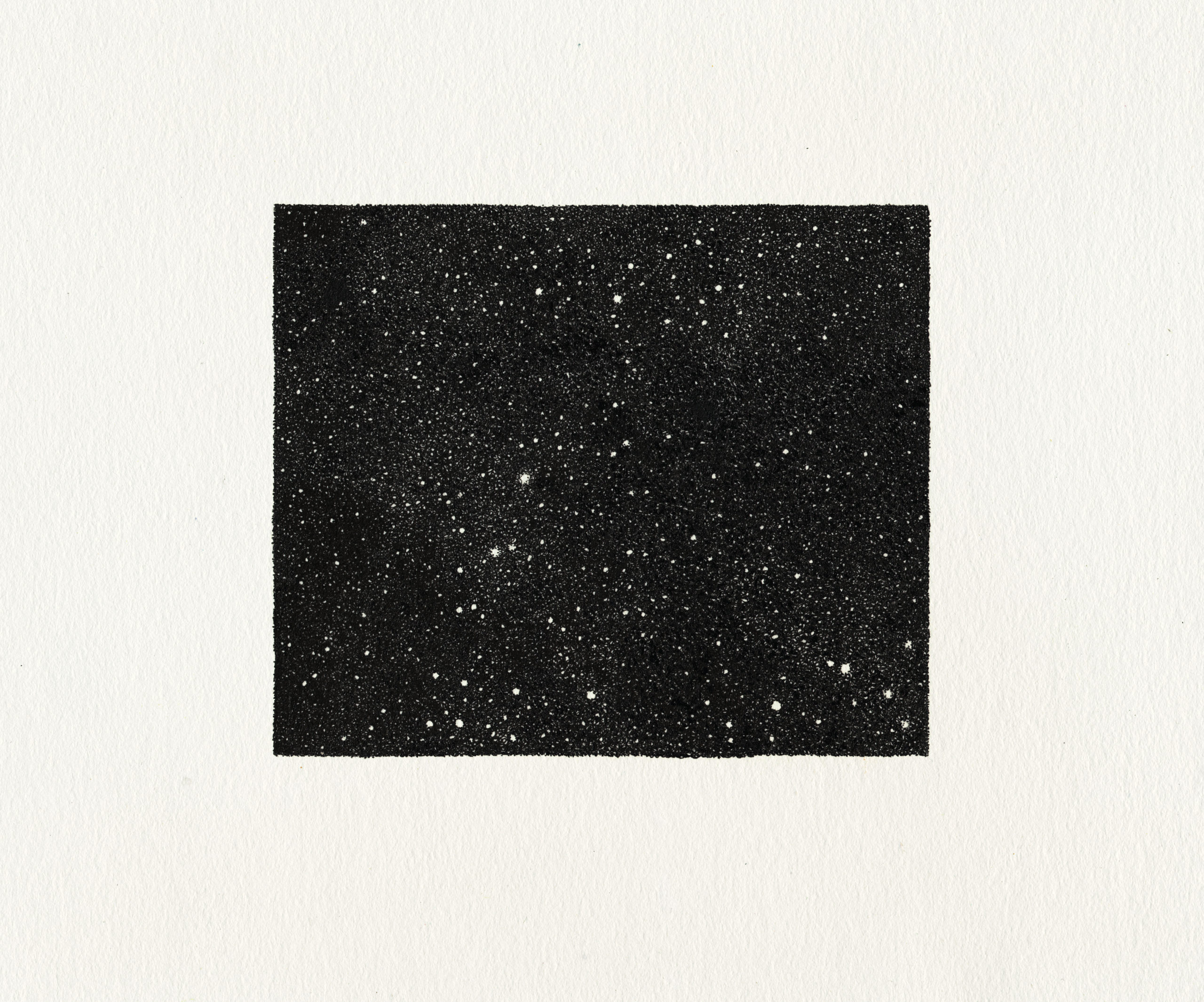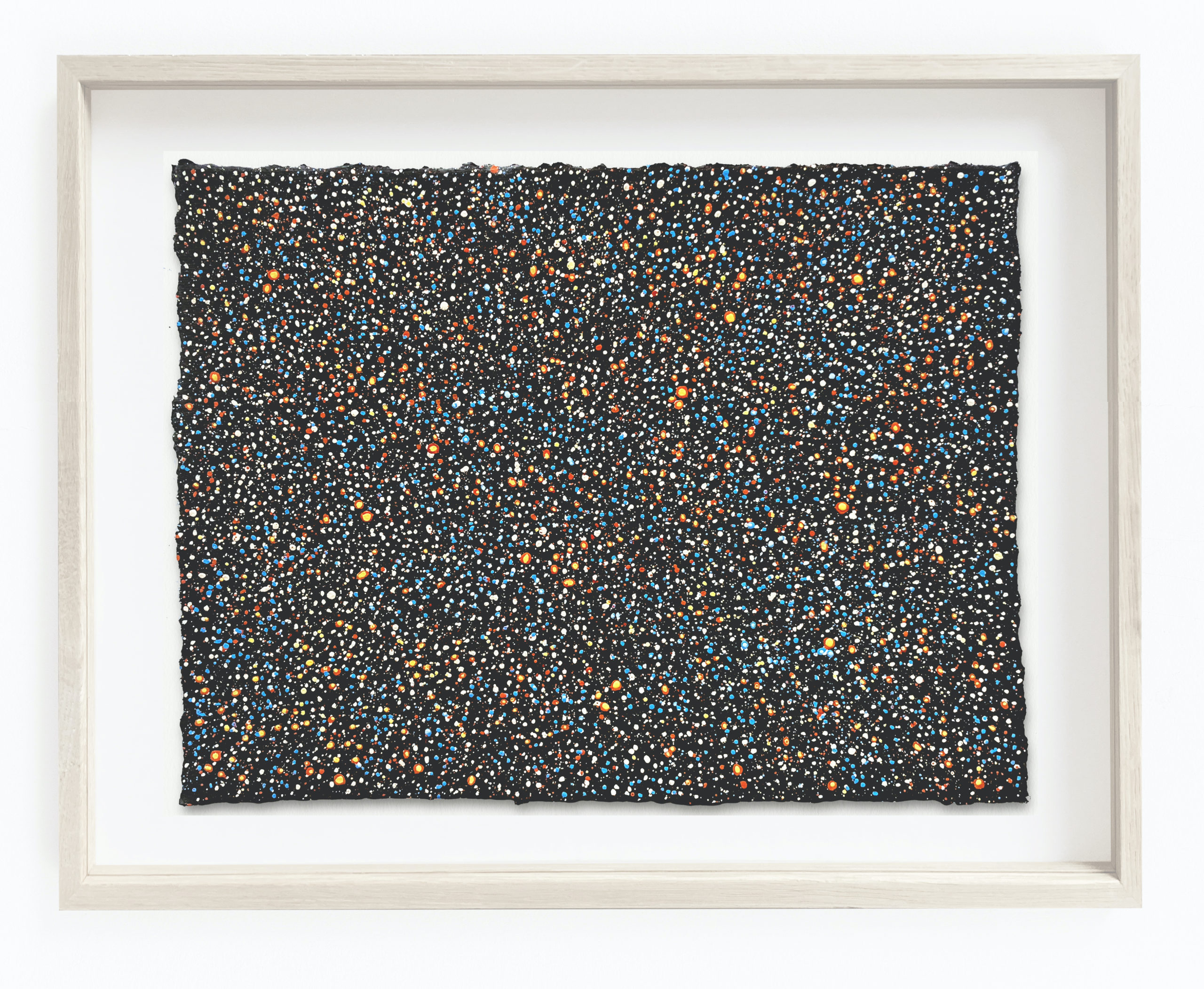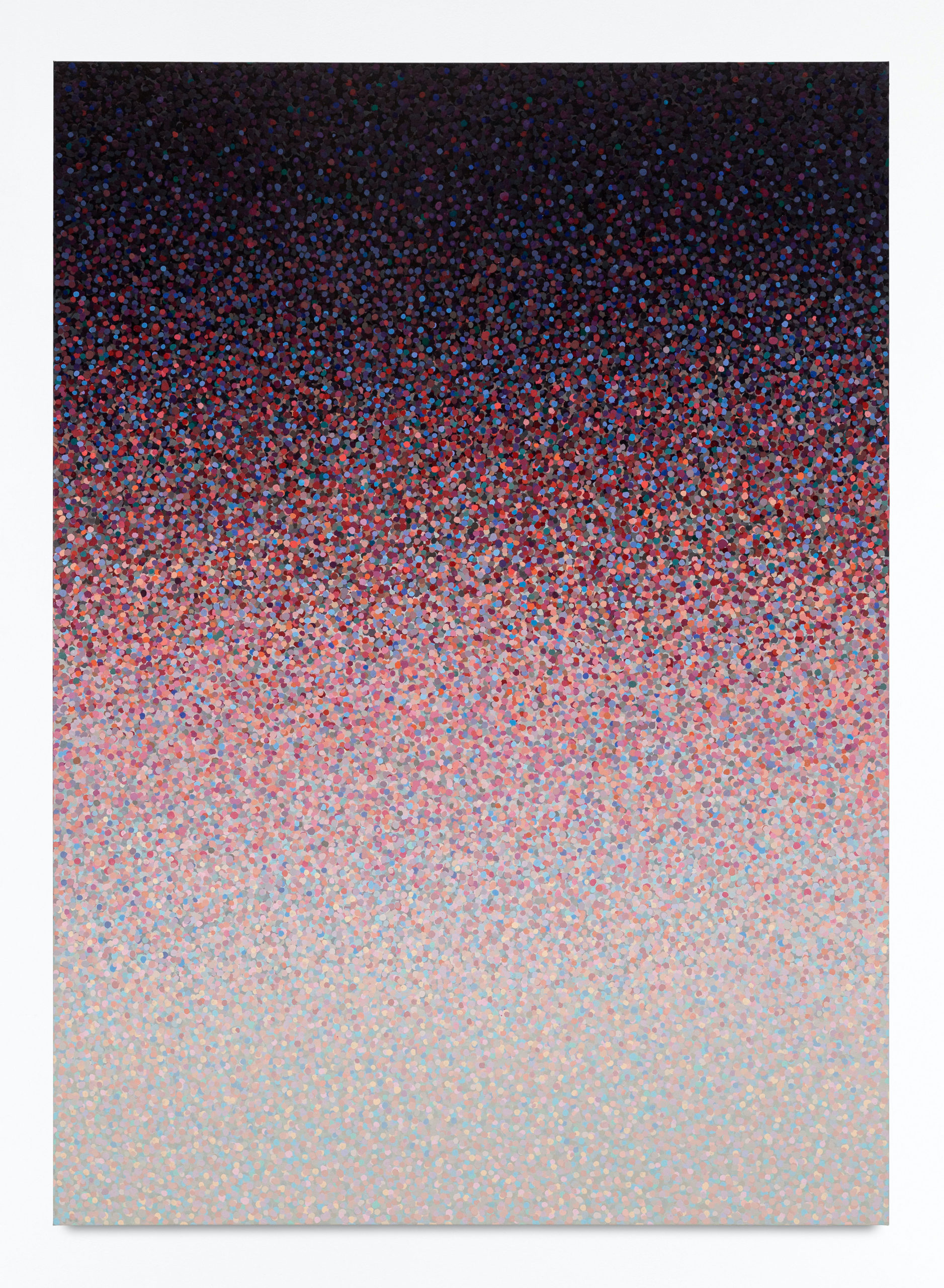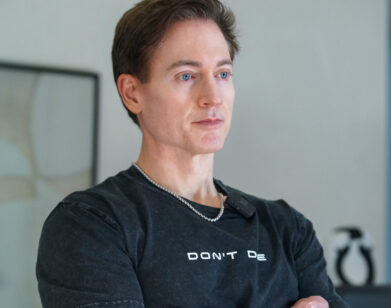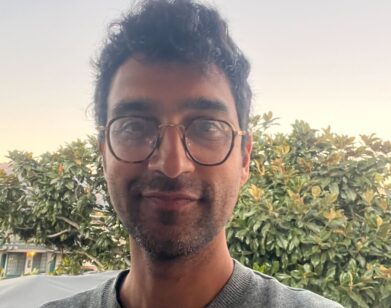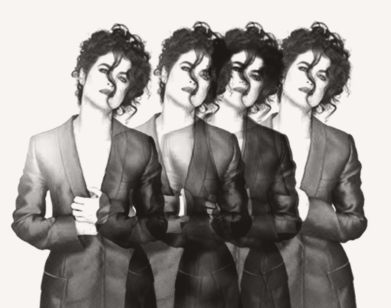outer space
Cyrielle Gulacsy Is Painting the Galaxy Star by Star
If you ask most artists where they found their first true creative inspiration, it’s not likely that they would name A Brief History of Time,” Stephen Hawking’s seminal tome on theoretical cosmology. But Cyrielle Gulascy is not most artists. The self-taught painter, born and based in Paris, uses stippling—an exacting, time-intensive technique—to craft sweeping, awe-inspiring cosmic forms. For Gulascy, the aim is to elicit a gut emotional response to the universe’s most fundamental principles, situating her paintings at the intersection of art and science. At just 27, Gulascy has already secured a residency at Poush Manifesto in Paris, and is opening her first solo exhibition at New York City’s Mignoni Gallery this month. The show, titled Light in The Distance, is a selection of larger-than-life paintings that explore the realms of astronomy and astrophysics. To mark the occasion, Gulascy sat down with Interview to discuss reality, space travel, and painting the Andromeda Galaxy star by star.
———
JACKSON WALD: What about the universe, and science in general, inspires you? How did that become your subject matter?
CYRIELLE GULACSY: I do not consider science as “subject matter,” but rather as a tool that I use to understand the world. My subject is just reality. When I was younger, I used to watch the night sky from my backyard. One day, I learned that the celestial vault I was looking at every night was like an old picture from the past, that it was impossible to know what was the current state of the universe because of the time light takes to reach us. This revelation made a big impression on me, because it called the reality around me into question. This moment is one of the reasons why I got interested in science, and why the “invisible” has such an important place in my work today. My interest in these subjects grew significantly by the end of high school. In fact, it accelerated suddenly—I read one book after another and got totally absorbed. At the same time, I never stopped drawing. My curiosity about science started to influence my artistic practice, triggering a real enthusiasm for research and experimentation.
WALD: Are there any books in particular that you remember exciting you?
GULACSY: There are many of them! I stumbled upon the first two randomly in a thrift store with my mother when I was 17. It was Stephen Hawking’s A Brief History of Time and E = mc2 by David Bodanis. They were side by side on a shelf and for some reason, I had to pick them up. I didn’t understand much at the beginning, but it sparked enormous curiosity in me. E = Mc2 is sort of a biography, a portrait of Einstein’s famous equation. It retraces the whole history of the scientific discoveries that lead to the formula, like electromagnetism and the speed of light… and I realized that this equation had not just fallen from the sky, ready-made into Einstein’s brain. It was the result of a long collective journey of successive discoveries that all contributed to driving knowledge forward. It’s kind of the same with art, we climb up the stairs built by artists before us.
WALD: Do you ever find your subject matter overwhelming? Does it ever feel too big or too vast to capture on a canvas?
GULACSY: Actually, it’s human society and the current state of the world that tends to overwhelm me. Looking back, I think my attraction to the universe, or the quantum world, comes from a need to distance myself from society. It is maybe a reaction to the violence of human relations, in work, politics, media, advertising… I find it much more overwhelming than stargazing. When it comes to the ‘’vastness of the universe” there can be some intense moments when I finally grasp something, but they are short. The rest of the time it feels very comforting to me. There is no fear or anxiety that comes out of it. Besides, it’s the fact that this subject is too vast to be represented that makes me want to tackle it. The human mind has a limited ability to grasp distances and quantities. In one of my paintings of the Andromeda galaxy, I used the pointillism technique, a human-made action, to communicate the vastness of the galaxy. Star by star, dot by dot.
WALD: Where do you see the intersection of art and science?
GULACSY: I am always struck when I hear scientists talk about the “beauty of an equation,” or the “harmony of a theory.” These adjectives are commonly used to talk about art. In science, especially in mathematics, the idea of beauty is often associated with simplicity or purity. It’s similar to the idea of minimalism. While art and science can share similar ambitions, explore common territories, they do so in different ways. Science obeys rigorous methods which tend towards objectivity. It is built by discussions, controversies, experiments, arguments that end up reaching a consensus. Art, on the contrary, is free and intimate, it can provoke emotions in us, sensations which will then reflect on our perceptions of nature. Here is, I believe, where an interesting dialogue between art and science can take place.
WALD: Your work tackles these universal topics. Where do you find inspiration in your day-to-day life?
GULACSY: Inspiration is mysterious. Usually when I look for it, it doesn’t show up. When it does, you have to catch it and translate it into the real world—into a work of art.
WALD: What do you think is the difference between how we view the world, and genuine reality?
GULACSY: Our senses are too limited to comprehend this “genuine reality.” We’re only able to catch a glimpse of it—not only do we have no clue that our senses are deceiving us, but we also have difficulties describing these phenomena. The reality described by quantum physics has nothing to do with our observable world, and it becomes difficult to translate the scientific results into our everyday language. This is why images, and by extension art, have a role to play in the description of these phenomena, thanks to its ability to abstract itself from language, and create a sensation that would better evoke the reality of these objects.
WALD: Let’s talk about space travel. It’s become popular for billionaires to leave the planet. I saw an article about you, where you were at a SpaceX launch. What are your thoughts on this new wave of interest in space and space travel?
GULACSY: I’ve always been very interested in space exploration, especially by laboratory spacecrafts. I followed the Rosetta and Cassini-Huygens missions, and today I’m very enthusiastic about NASA’s Parker solar probe that is going to the Sun, the upcoming Titan mission and the long-awaited James Webb space telescope. I don’t really know how I feel about space travel today. The spirit is very different from the beginnings of space exploration which were motivated by scientific research. I have the feeling that it won’t teach us anything new—it will only benefit a tiny part of the population, compared to the ecological impact that it has. I prefer to focus on scientific missions, manned or not, because they have things to teach us.
You can find Cyrielle on Instagram at @cyrielle_gulacsy.

